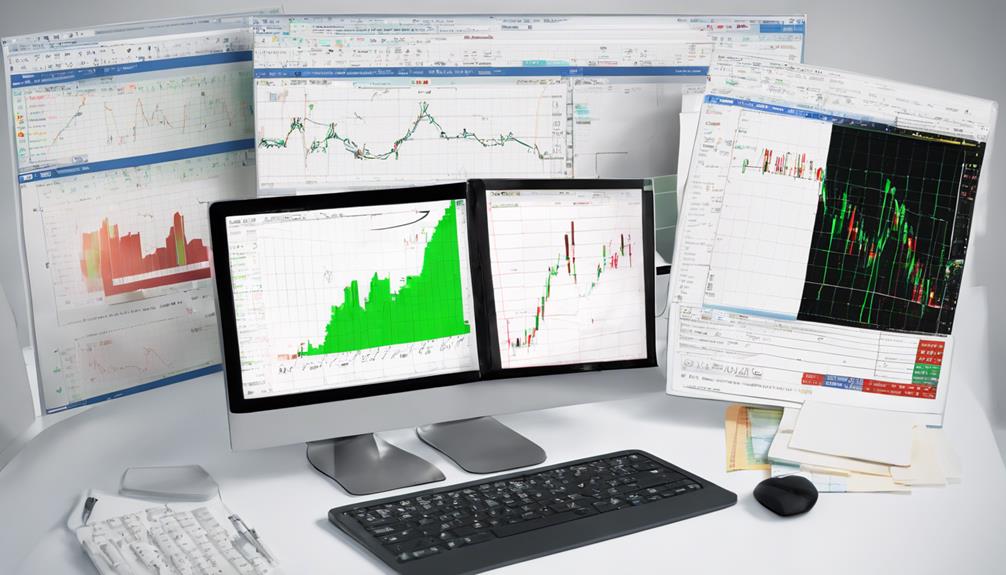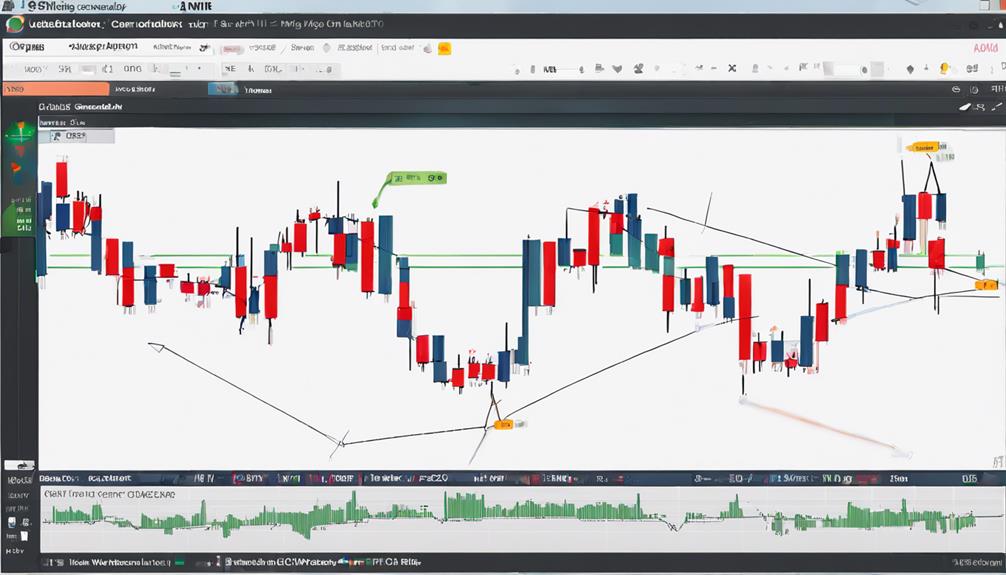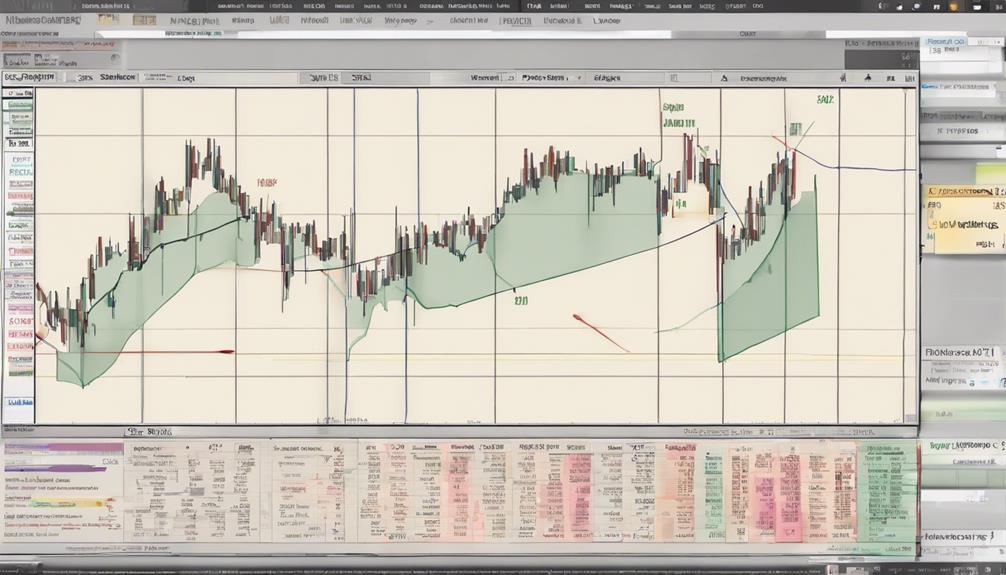In the fast-paced world of day trading, incorporating effective tools like the Chaikin Money Flow (CMF) indicator can be pivotal for traders seeking to enhance their strategies.
Understanding the nuances of the CMF, from its calculation to practical application, can provide valuable insights into market dynamics and potential opportunities.
By exploring how day traders can leverage the CMF for optimizing entry and exit points, managing risk, and maximizing profits, a deeper understanding of this indicator's role in enhancing trading outcomes becomes apparent.
Understanding the CMF Indicator
The understanding of the CMF indicator is essential for day traders seeking to gauge buying and selling pressure through a meticulous analysis of price and volume data.
The Chaikin Money Flow (CMF) Indicator serves as a crucial tool in trading, providing insights into the flow of money in and out of a security. By assessing CMF values that range from -1 to +1, traders can interpret whether there is buying or selling pressure present in the market. Positive CMF values indicate buying pressure, while negative values suggest selling pressure.
This indicator helps traders evaluate the strength of a trend and potential reversals by analyzing the accumulation and distribution of money within a security. Day traders rely on the CMF to identify trend direction, confirm breakouts, and make well-informed trading decisions based on the analysis of money flow, price movements, and volume data.
Understanding the intricacies of the CMF indicator enables traders to navigate the dynamic nature of the financial markets effectively.
Calculating CMF for Day Trading

How can day traders effectively calculate the CMF indicator to analyze buying and selling pressure in the market?
To compute the CMF for day trading scenarios, follow these steps:
- Calculate the Money Flow Multiplier by using the formula: [(Close – Low) – (High – Close)] / (High – Low).
- Multiply the Money Flow Multiplier by the volume for the period to obtain the Money Flow Volume.
- Compute the 21-period CMF by summing the Money Flow Volume over 21 periods.
Remember that CMF values range between -1 and +1, typically fluctuating within the -0.50 to +0.50 range for day trading.
A positive CMF suggests buying pressure, while a negative CMF indicates selling pressure in day trading scenarios.
Utilizing CMF for Entry Points

Utilizing the CMF indicator strategically enhances day traders' ability to pinpoint opportune entry points based on market dynamics and buying or selling pressures.
When observing the Chaikin Money Flow (CMF), positive values above zero suggest potential buying opportunities, indicating strong buying pressure. Conversely, negative CMF values below zero may signal selling points, reflecting higher selling pressure in the market.
To improve the accuracy of entry decisions, day traders often combine CMF with other technical indicators to seek confirmation signals before executing trades. Additionally, incorporating CMF readings into setting stop-loss levels can aid in effective risk management.
Managing Risk With CMF

Incorporating the Chaikin Money Flow (CMF) indicator into risk management strategies can significantly enhance day traders' ability to make informed decisions and navigate market volatility effectively. The CMF provides valuable insights into buying and selling pressure, aiding traders in assessing and managing risks. Here are key ways day traders can utilize CMF for risk management:
- Identifying Buying and Selling Pressure: CMF values above zero signal buying pressure, while values below zero indicate selling pressure, offering traders a clear view of market sentiment.
- Setting Stop-Loss Levels: Day traders can use CMF to establish appropriate stop-loss levels based on the direction of the indicator and the prevailing trend, helping to mitigate potential losses.
- Enhancing Risk Management: By integrating CMF into risk management strategies, traders can better gauge the market environment and adjust their positions accordingly.
- Navigating Market Volatility: Understanding CMF's role in risk assessment empowers traders to make more calculated decisions, especially in volatile market conditions.
Maximizing Profits With CMF

Day traders can leverage the Chaikin Money Flow (CMF) indicator to strategically enhance their profit potential through real-time identification of buying and selling pressure. By analyzing the CMF, day traders can effectively determine optimal entry and exit points based on the intensity of accumulation or distribution signals. This insight aids in maximizing profits by ensuring trades are executed at advantageous price levels.
Furthermore, CMF plays a crucial role in confirming trends, thereby assisting traders in making informed decisions and potentially avoiding false signals that could lead to losses. Understanding market sentiment through CMF empowers day traders to capitalize on lucrative opportunities with heightened probability.
What are the benefits of using the CMF indicator for day trading?
When it comes to swing trading with CMF indicator, the benefits are clear. This tool helps traders identify potential trends and momentum shifts, allowing for more informed decision-making. By using the CMF indicator, day traders can gain valuable insights into market movements and make smarter, more profitable trades.
Frequently Asked Questions
How Do You Trade With CMF Indicator?
To trade with the CMF indicator, analyze positive values above zero for buying pressure and negative values below zero for selling pressure. Combine CMF with moving averages for confirmation signals. Use it for trend analysis and breakout validation in day trading strategies.
What Is the Best Indicator for Day Trading?
In the realm of day trading, the Relative Strength Index (RSI) stands out as a popular choice amongst traders. Its ability to indicate overbought or oversold conditions offers valuable insights for making informed trading decisions.
How to Use Cmf?
To utilize the Chaikin Money Flow (CMF) indicator effectively in day trading, calculate it by summing Money Flow Volume over a specified period and dividing it by the volume sum. Positive values signal buying pressure, while negative values indicate selling pressure.
Is Chaikin Money Flow a Good Indicator?
Certainly, Chaikin Money Flow (CMF) serves as a valuable indicator for day traders. By evaluating buying and selling pressure, CMF aids in confirming trends and identifying potential reversals, facilitating optimized entry and exit points for traders.
Conclusion
In conclusion, optimizing day trading with the CMF indicator requires a deep understanding of its calculation and interpretation.
By utilizing the CMF for entry points, managing risk, and maximizing profits, traders can make informed decisions and tailor strategies for success.
Remember, the key to successful day trading lies in the careful analysis of indicators like the CMF to navigate the complexities of the market with precision and strategy.
